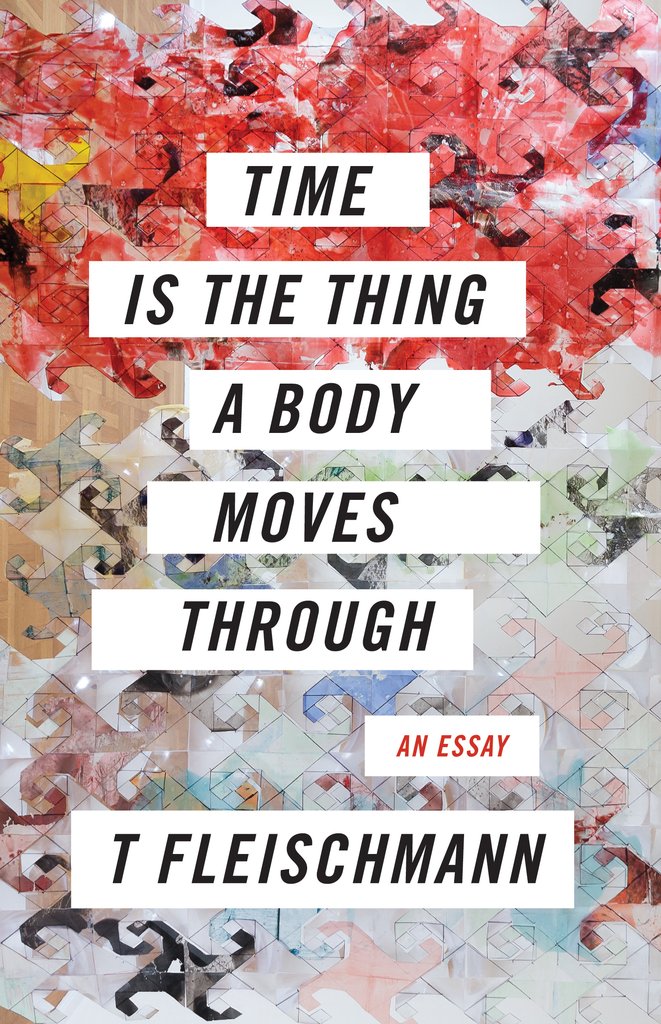Queer time is not linear, it is hardly anything at all, in fact, it may not even exist. This is one of the many things that T. Fleischmann grapples with in their book-length essay Time Is the Thing a Body Moves Through. The nebulous text loosely follows Fleischmann through thought processes on how they interact with the bodies of others and well as their own. Utilizing Felix Gonzales-Torres’ artwork as well as other artists and figures, they traverse queerness and existing in the world as an ever-changing person.
Fleischmann’s ideas act in conversation with queer theory, ruminating on the nature of queerness itself rather than simply identity:
Queerness, when I first encountered the idea, aspired to a life away from identity categories, eroticizing what lies outside them, but today it seems the word points to a reification of identity, to new rules.
This first engagement with queerness calls to the idea of queer theory, the study in which queerness is more than labels on sexuality or gender but an idea of opposition to the norm. That beyond the straight surface of something, there can be a queer underbelly. Fleishman follows this idea of queering something through their moments of historical nonfiction, including the large section about the life of the Publick Universal Friend, a genderless person who lived in the late 18th century and into the early 19th century, sermonizing and building a large following of people.
Time Is the Thing a Body Moves Through eschews categorization, queer on its own. The text spirals, breathlessly, without breaks or section dividers, seamlessly moving between personal narrative, verse, and history. Fleishmann traverses from location to location, New York, Chicago, Berlin, Tennessee, sparingly describing the relationships they have with various friends and lovers. It dips into niches of ice, cruising, the moon before broadening back out into queer time.
There is no linear arc of the book, only mirrors and returns, transformations. Regarding the structure of the book, Fleishmann writes:
I distrust linearity, but bodies can seem like one of the only linear things—age, getting bigger and then smaller, death, Another reason to appreciate the transitioning body, which ages backward, each person seeming to become younger, with or without taking hormones. It’s a good reminder that the body was never linear anyways.
Fleishmann’s body fluctuates as queer time affects it. They describe their debilitating acne as a young adult, and the way that the queerness of cruising and hookup culture exacerbated this to their sense of self. Queer time can brutalize the body, make it weak, but can also save it. Fleishmann describes the changes that hormone replacement therapy wrought on their body, and how good that felt:
Another reason to appreciate the transitioning body, which ages backward, each person seeming to become younger, with or without taking hormones. It’s a good reminder that the body was never linear anyways. And anyway, when wasn’t my desire pubescent? I didn’t know what I wanted until I had it, which was just to feel different
Queer time is not linear, and so these effects on the body are not linear either. As Fleishmann describes how transitioning makes a trans person seem younger, they show the nature of queer time. The goalposts of the traditional cishet person are irrelevant to the queer body, which rejects institution, and yet are sometimes upheld by queer people. Fleishmann recounts this as they get married in the book, even as they disparage the idea of marriage as a whole.
Fleishmann comes back again and again in the essay to Felix Gonzales-Torres’s work, ephemeral installations of candy or stack of paper, hanging curtains of cheap beads, a billboard.
Gonzales-Torres’s work many times utilized queer time, as the pile of candy would decrease, or two clocks would eventually come out of synch with one another. As Fleishmann writes, Gonzales-Torres’s pieces “work to undo the institutions that procure them, forcing their owners to go out and buy some cheap beads,/ just as other pieces require the owners to give away, endlessly, what was just purchased.” The pieces queer these institutions, existing without limitation, in queer time.
It seems far too linear for the essay to end, and yet it does, succumbing to time. But perhaps as each person reads it, like with each new visitor to a Felix Gonzales-Torres piece, it is renewed again, thawing and freezing into a moment of clarity.



